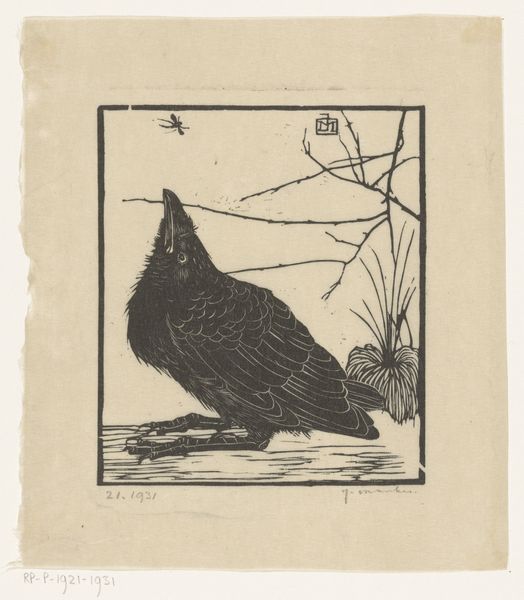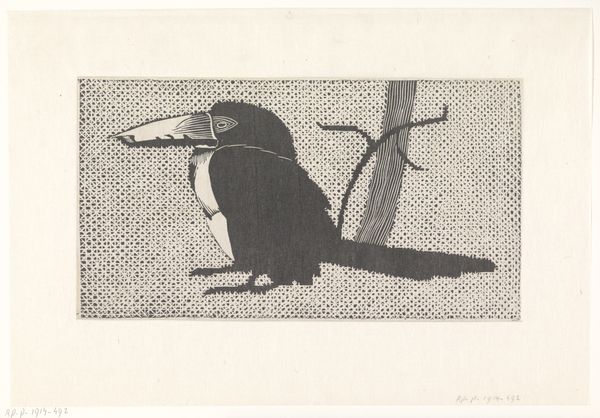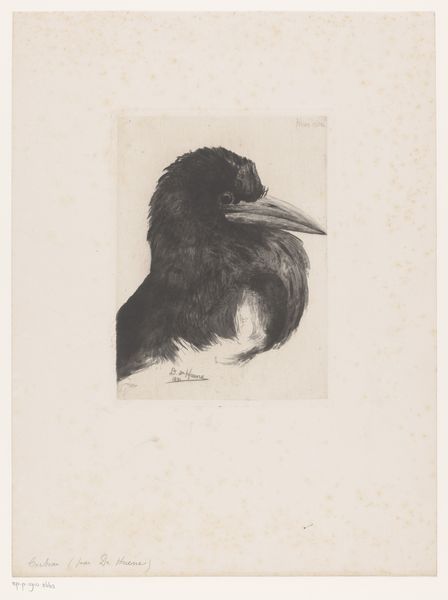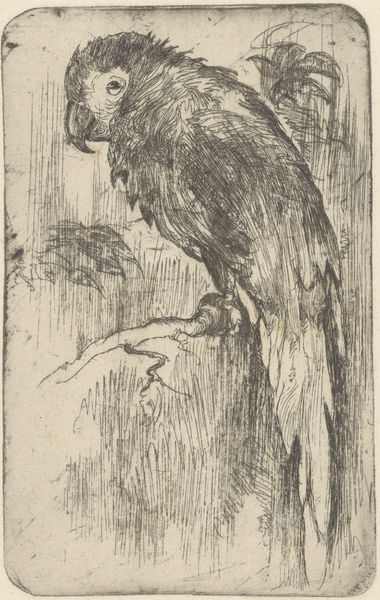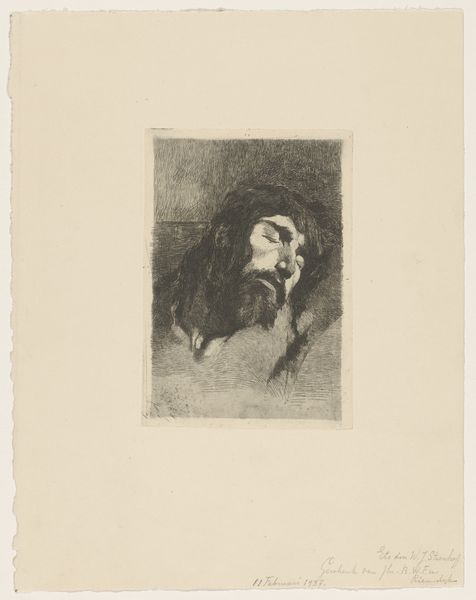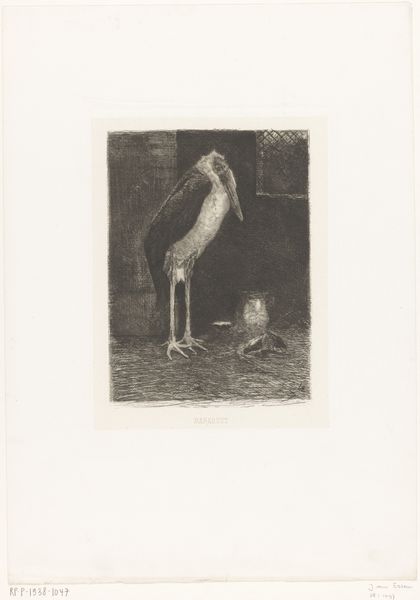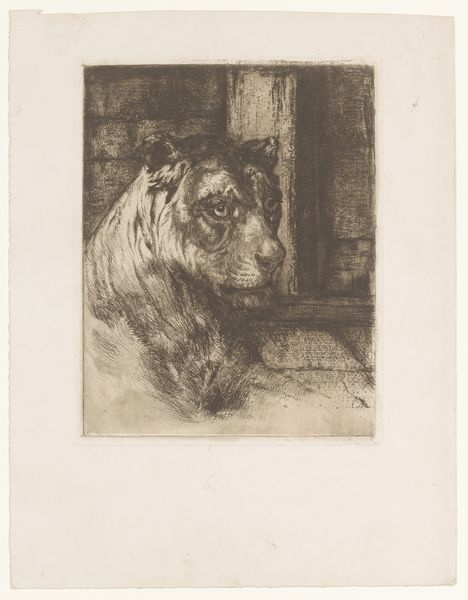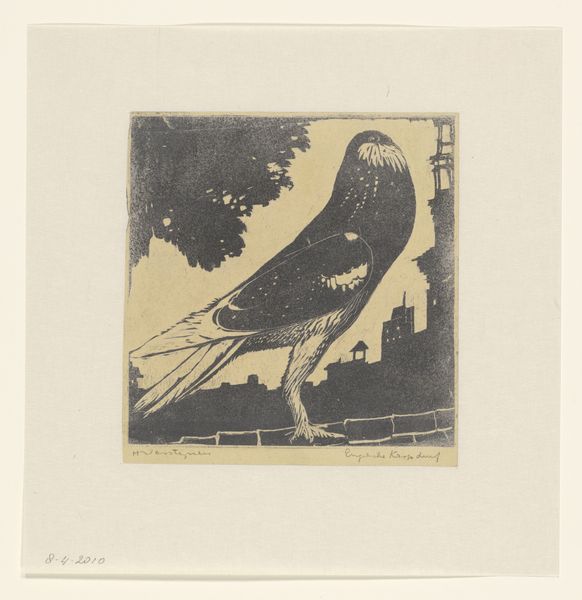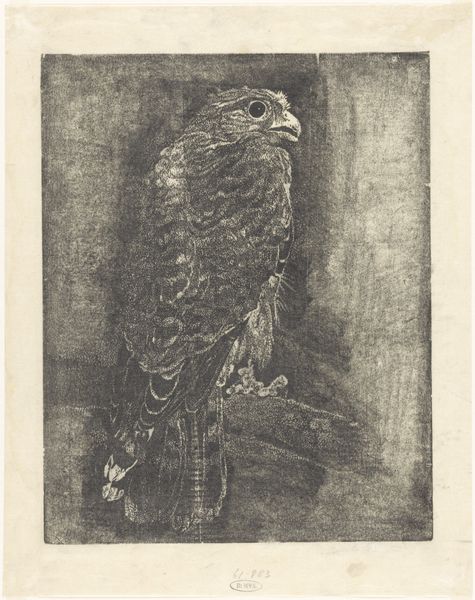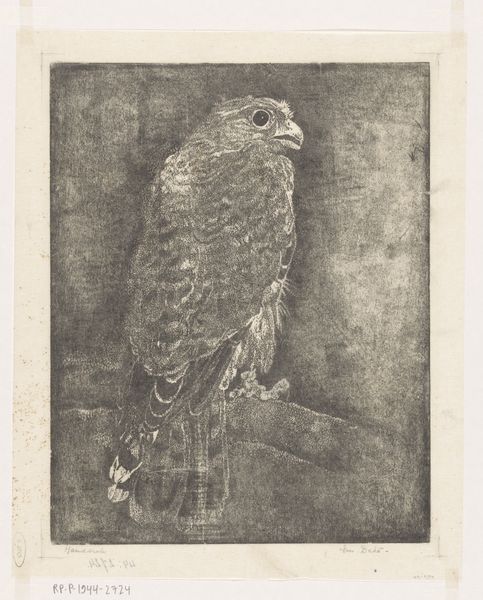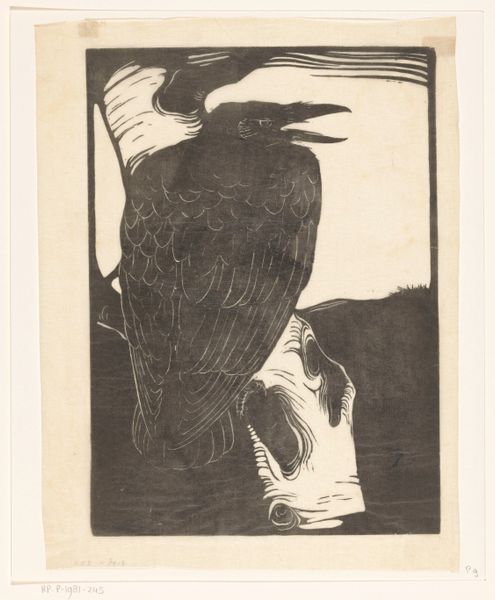
drawing, print, etching, paper, ink
#
drawing
# print
#
etching
#
landscape
#
figuration
#
paper
#
ink
#
symbolism
#
realism
Dimensions: height 249 mm, width 178 mm
Copyright: Rijks Museum: Open Domain
Editor: This is Willem Witsen's etching and ink print on paper, "Kraai Ina," from around 1887-1888. It feels incredibly stark and solitary to me; the black bird is so visually heavy against the bare background. What stands out to you? Curator: What immediately captures my attention is the tension between realism and symbolism here. Witsen’s work aligns with a broader late 19th-century trend of artists engaging with social commentary through imagery of everyday life. Given the historical context, how might the choice of a crow—often associated with omens or negative symbolism—comment on the societal anxieties of the time? Editor: That's a great point; I was just focusing on my gut reaction. Was there something specific happening then? Curator: The late 19th century saw rapid industrialization and urbanization. Artists were grappling with the changing social landscape. Consider the crow as a symbol – perhaps a commentary on urban decay or social alienation creeping into society. How does knowing it's an etching, a print, shape how we receive the piece? Editor: Etchings have a reproductive quality – maybe its critique is about something pervasive or widespread. Does its location in the Rijksmuseum affect the way we understand the piece now? Curator: Absolutely. Placing this relatively small, intimate work within the grand space of the Rijksmuseum elevates its significance. The institution essentially sanctions Witsen’s social commentary, turning it into a piece of national heritage, part of the cultural narrative. Does seeing it framed within the institution shift your perception of its original intent? Editor: Definitely. Knowing about that time period makes it seem much more layered. I had assumed it was a fairly straightforward depiction. Curator: Indeed. By understanding the historical context and the role of institutions, we move beyond a purely aesthetic appreciation to understand the work's broader cultural significance. Editor: I’ll definitely look at art with more historical context in mind moving forward! Curator: And I'll be sure to always consider my initial reactions when viewing new works, even beyond the socio-political. Thank you!
Comments
No comments
Be the first to comment and join the conversation on the ultimate creative platform.
